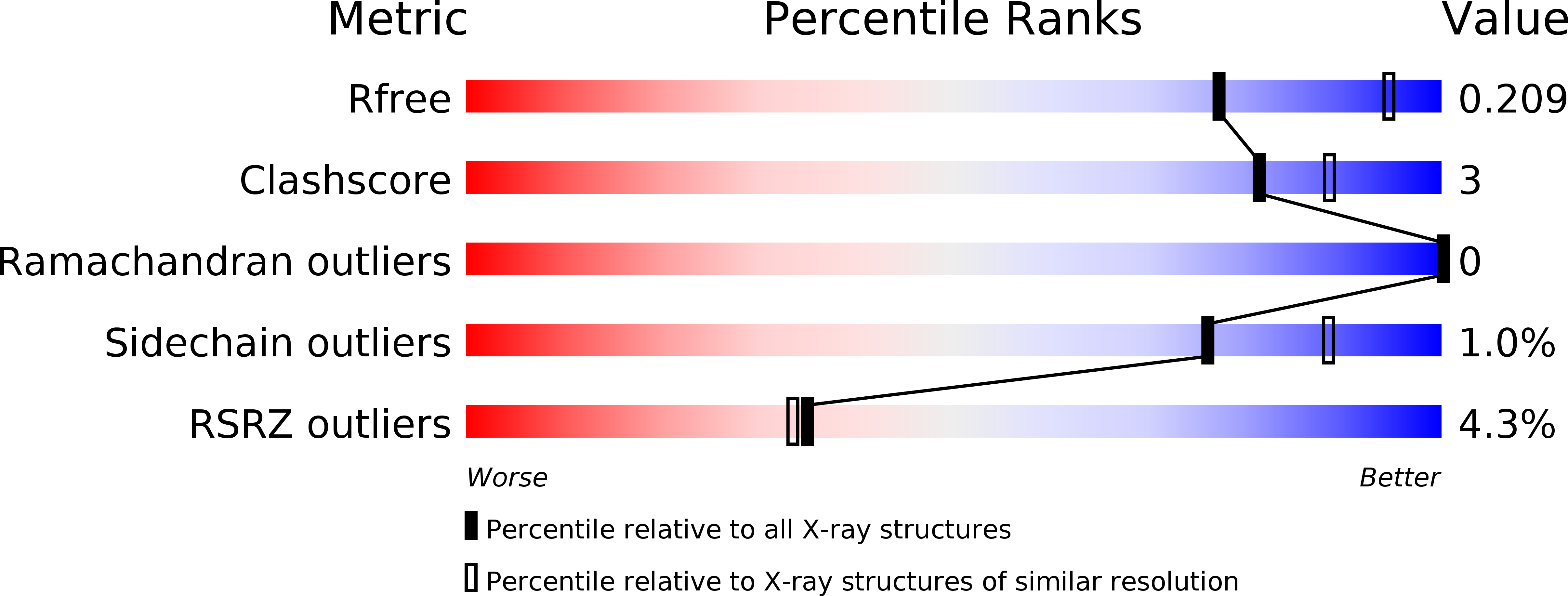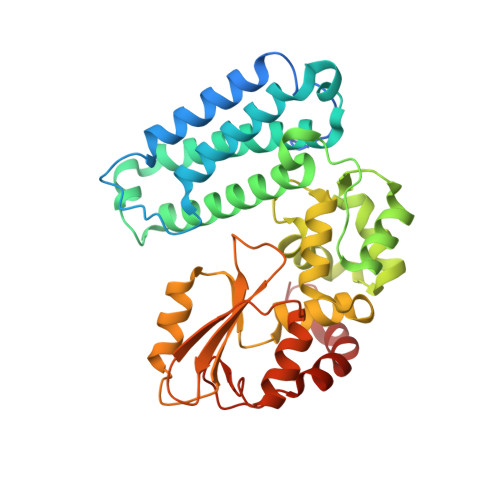Phosphorylation control of the ubiquitin ligase Cbl is conserved in choanoflagellates.
Amacher, J.F., Hobbs, H.T., Cantor, A.C., Shah, L., Rivero, M.J., Mulchand, S.A., Kuriyan, J.(2018) Protein Sci 27: 923-932
- PubMed: 29498112
- DOI: https://doi.org/10.1002/pro.3397
- Primary Citation of Related Structures:
6BK5 - PubMed Abstract:
Cbl proteins are E3 ubiquitin ligases specialized for the regulation of tyrosine kinases by ubiquitylation. Human Cbl proteins are activated by tyrosine phosphorylation, thus setting up a feedback loop whereby the activation of tyrosine kinases triggers their own degradation. Cbl proteins are targeted to their substrates by a phosphotyrosine-binding SH2 domain. Choanoflagellates, unicellular eukaryotes that are closely related to metazoans, also contain Cbl. The tyrosine kinase complement of choanoflagellates is distinct from that of metazoans, and it is unclear if choanoflagellate Cbl is regulated similarly to metazoan Cbl. Here, we performed structure-function studies on Cbl from the choanoflagellate species Salpingoeca rosetta and found that it undergoes phosphorylation-dependent activation. We show that S. rosetta Cbl can be phosphorylated by S. rosetta Src kinase, and that it can ubiquitylate S. rosetta Src. We also compared the substrate selectivity of human and S. rosetta Cbl by measuring ubiquitylation of Src constructs in which Cbl-recruitment sites are placed in different contexts with respect to the kinase domain. Our results indicate that for both human and S. rosetta Cbl, ubiquitylation depends on proximity and accessibility, rather than being targeted toward specific lysine residues. Our results point to an ancient interplay between phosphotyrosine and ubiquitin signaling in the metazoan lineage.
Organizational Affiliation:
Department of Molecular and Cell Biology, University of California, Berkeley, California.















